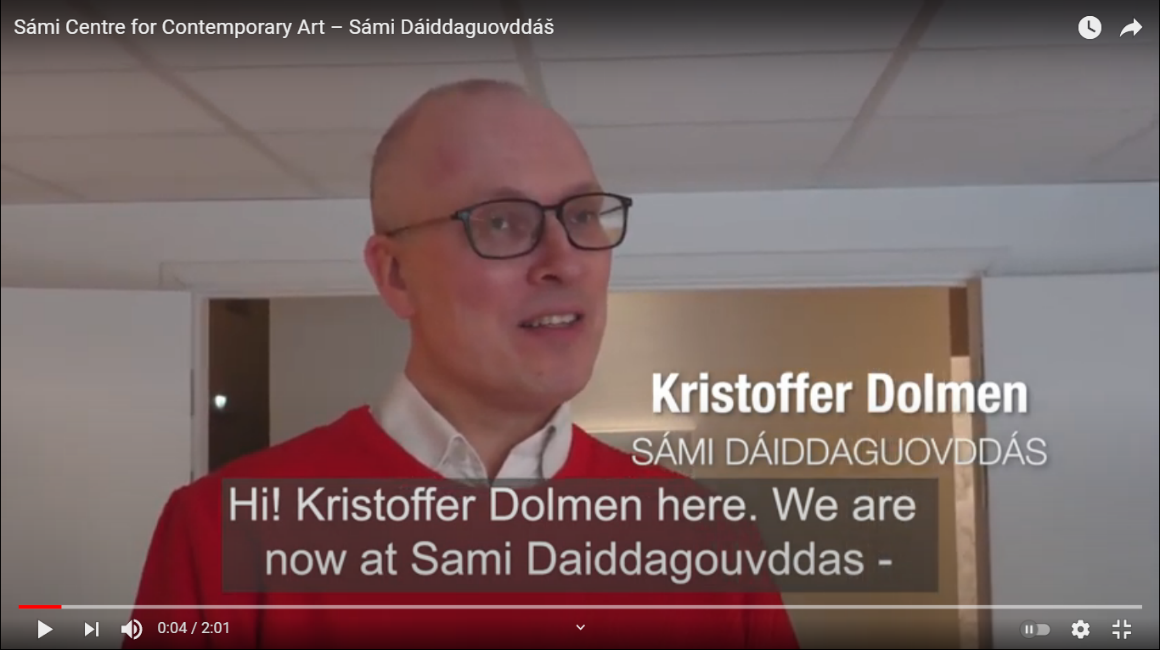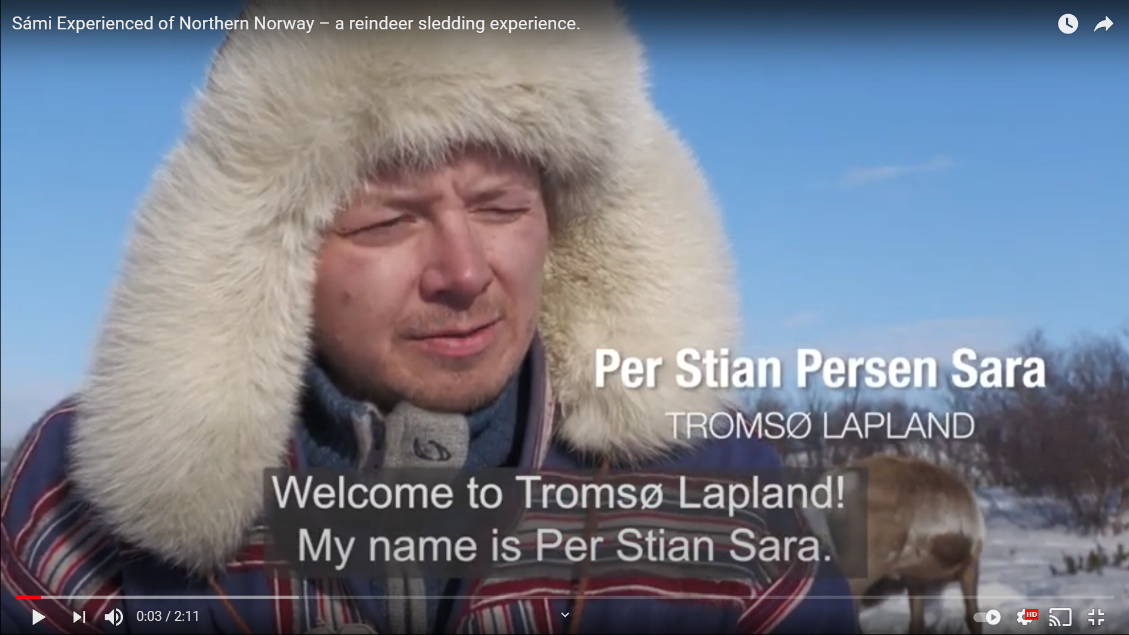Text: Randy Bruin, Emily Höckert & Camilla Brattland
Videos: Trond Anton Andersen
One of the main activities in the ARCTISEN project, are the benchmarking events that bring together different kinds of tourism actors across the Arctic. The first benchmarking trip took place in Greenland (read more here and here) in December 2019. This trip was a success in many ways and lead to new inspiration and practical ideas for developing culturally sensitive tourism products.
While the ARCTISEN-team was in the middle of planning the forthcoming trips to Canada, Finland, Norway and Sweden the pandemic forced us to change our plans. Instead of encountering local tourism companies in situ, it became timely to envision virtual ways of visiting each other. As a result, the online benchmarking events are now taking place between April and June, 2021. Just like after the benchmarking trip in Greenland, we want to share ideas, inspiration and other souvenirs from these new gatherings as well.
Cultures and entrepreneurs on the move
The online benchmark series started April 26, broadcasted from Northern Norway with the theme: Representing culture: Moving away from stereotypes. This digital study trip was attended by nearly 40 participants from Canada, Denmark, Finland, Greenland, Sweden and Norway.
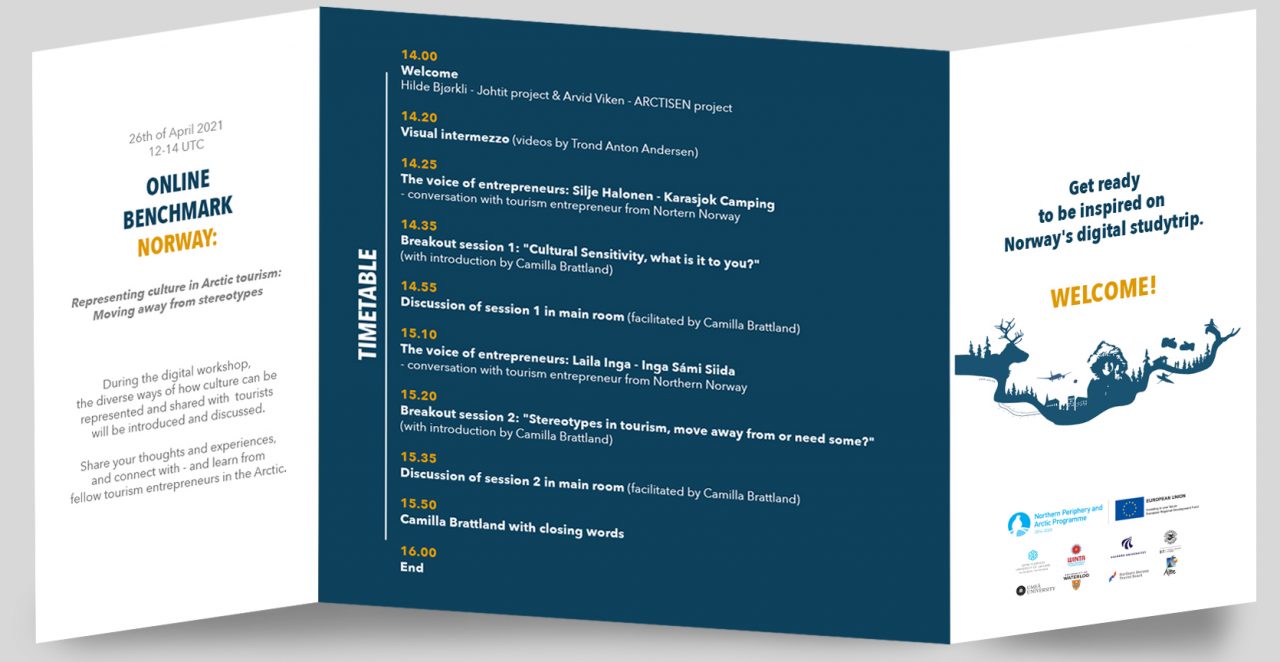 The event brought together participants in Johtit and ARCTISEN projects. In her words of welcome, Hilde Bjørkli, director of the regional destination management organization in northern Norway, Nordnorsk Reiseliv (NNR), provided a summary of the Johtit project.
The event brought together participants in Johtit and ARCTISEN projects. In her words of welcome, Hilde Bjørkli, director of the regional destination management organization in northern Norway, Nordnorsk Reiseliv (NNR), provided a summary of the Johtit project.
The Northern Sámi word, johttit, means travelling, moving, or on the move. The symbolic meaning in a tourism specific context implies that both tourism and tourism entrepreneurs are dynamic. Hilde described that Sámi tourism in the North is characterised by change. While tourists were before mainly passive observers, today the guests are invited to engage in interactive forms of learning. This means that tourism entrepreneurs have become active disseminators of culture and nature. The Johtit project is a network of 16 Sámi-owned businesses, which all have their own ways of using the rich and multi-faceted Sámi culture in tourism products and services.
The floor was then given to Arvid Viken, emeritus professor at the Department of Tourism and Northern Studies, the Arctic University of Norway (UiT). His talk reminded of the lamentable legacy of stereotyping, appropriation and assimilation in Indigenous tourism in the Arctic. Arvid discussed how the ARCTISEN project has been searching for a culturally sensitive orientation toward others and otherness; that is, an orientation based on recognition, respect and reciprocity. What is more, the notion of cultural sensitivity can help us to move away from stereotypes, by focusing on the dynamic nature of cultures.
Gathering by Min Ája
The next stop in our benchmarking trip was a Sámi basecamp Min Ája in Finnmark, Northern Norway, ran by Silje Halonen and Ronny Antonsen. They welcomed us all to visit their company through this video.
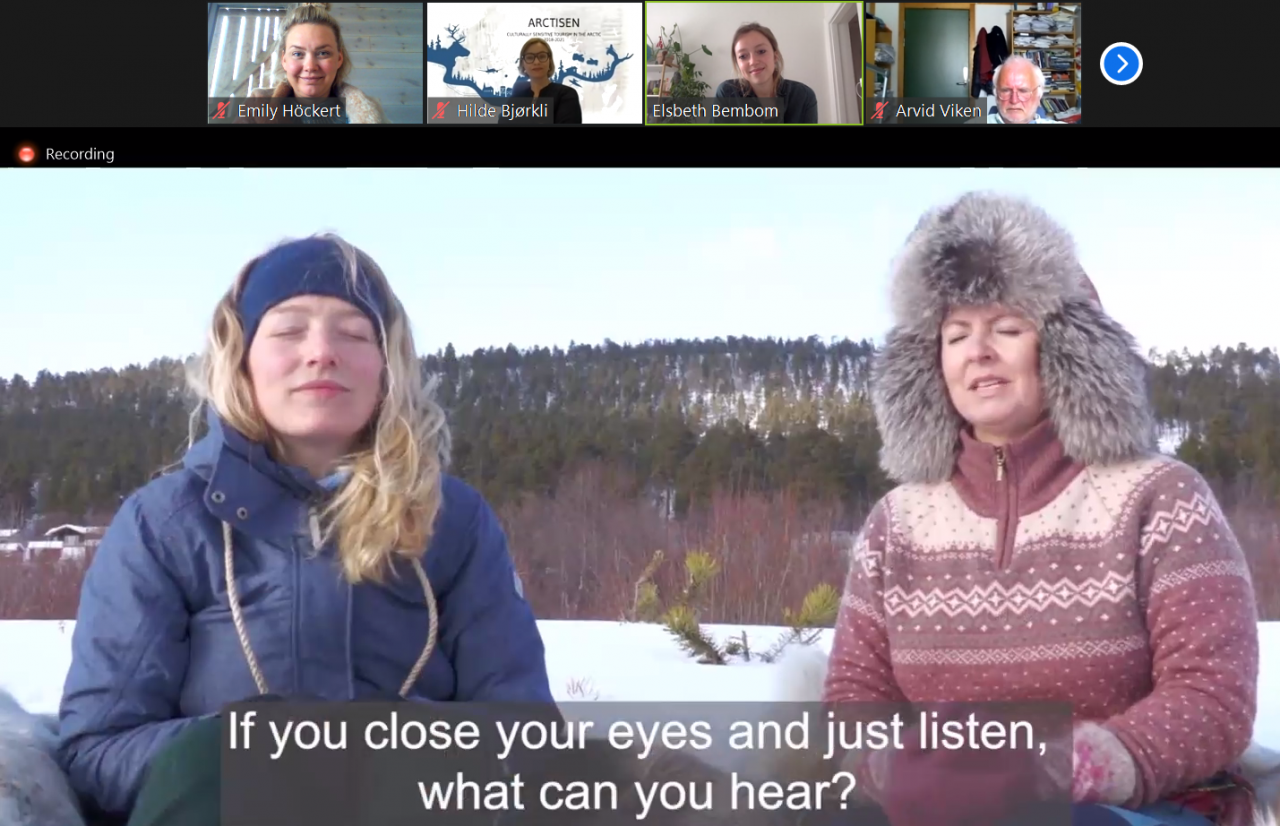
Image: Benchmarkers were virtually invited to Karasjok-camping with Randy Bruin and Silje Halonen
In a follow up conversation with Silje Halonen, she explained that the business had been running for 10 years, without being promoted as a Sámi business. In her words, she had earlier not felt ‘Sámi enough’ as she is not used to joik or to have reindeer. Nevertheless, being partner of Johtit network had been an eye-opener considering the ways in which she values her own Sámi identity. Her personal journey – accompanied by the other companies in and outside Norway – helped Silje to understand how Indigenous cultures can be used in tourism in various ways. As a result, Karasjok Camping was recently re-named as Min Ája; that is, with a Sámi name that translates as Our Source. Silje described how she today feels confident to talk about her culture and to offer tourism products and services with their own Sámi profile.
From the campsite, we moved on to the first break-out session. This gave us a chance to discuss valuable tourism experiences and our understanding of cultural sensitivity in smaller groups. We were all positively surprised how smoothly the smaller gatherings could be organised virtually. Moreover, these talks sparked interest to continue the discussions with the people we had met in our groups. The takeaways and souvenirs from these group discussions are presented at the end of this article.
Invitation to Inga Sámi Siida
The next video welcomed us to visit Inga Sámi Siida, a company located on Hinnøya island, Vesterålen, where Laila Inga’s family has lived for over 100 years.
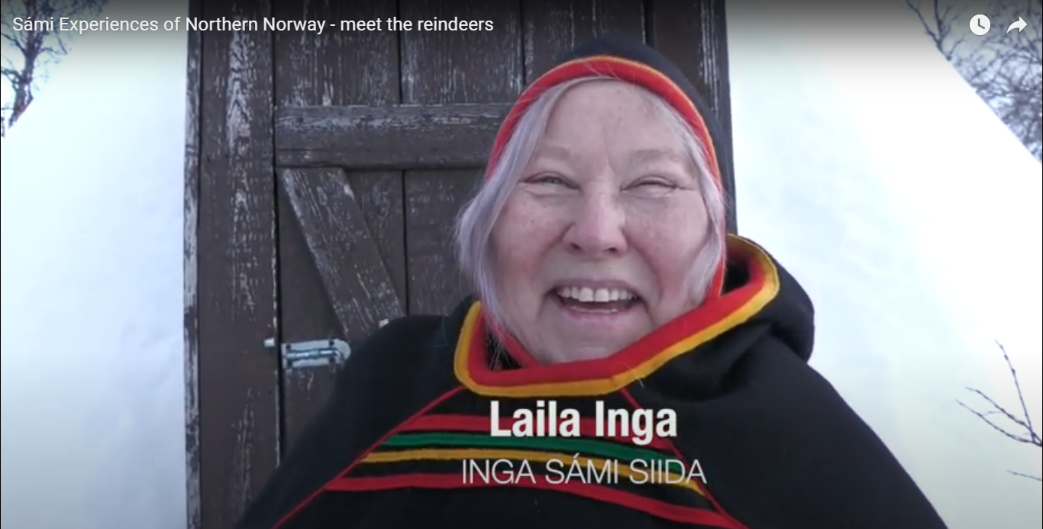
Image: A snapshot of a laughing Laila Inga taken from the video
After watching a video about Inga Sámi Siida, Hilde invited Laila Inga for a conversation. Besides being a reindeer herder family, Inga Sámi Siida started in 2009 as tourism company. After multiple requests of people close by who wanted to ‘take a look’ at their place where the Inga family helped reindeers to survive during winter hardship, Laila felt the urge to share this experience with others as well. In the first years, the Inga family tried out different seasons and set-ups to sell their experiences. Laila’s brilliant skills as a storyteller, which Hilde also mentioned, are valuable when Laila shares her knowledge about reindeer and the lessons, we can learn from them. Today also other Sámi families reach out to Laila for advice on Sámi food preparation, how to prepare the reindeer skin and other cultural aspects.
Towards more colorful and nuanced images of the Arctic
Towards the end of the benchmarking trip, Camilla Brattland from UiT hosted the second break-out-sessions, which revealed some new, important aspects of stereotypes within tourism.
These discussions drew attention to the dynamic nature of indigenous arts. For instance, Kristoffer Dolmen from Sámi Dáiddaguovddáš – Sámi Centre of Contemporary Art, pointed out how guests might have strong pre-assumptions and expectations what Sámi art is supposed to be like – read: something traditional or historical. However, in Kristoffer’s view, Sámi art is simply something that is made and designed by a Sámi artist. While Sami centres or museums often display more stereotypical, traditional cultural elements, contemporary Sami museums create new spaces for modern art. In a similar vein, Nini Brandt from Greenland Outdoors argued that the Greenlandic art is in constant change. While some might think that a certain object ‘is not Greenlandic art’, it is a piece of mind from Greenlandic person who made it, and hence also Greenland’. Through art expositions and different ways of storytelling, guests can reflect their expectations and learn about the ongoing cultural change.
“We can make a more colorful picture of people and nature”
Nini Brandt, Greenland Outdoors
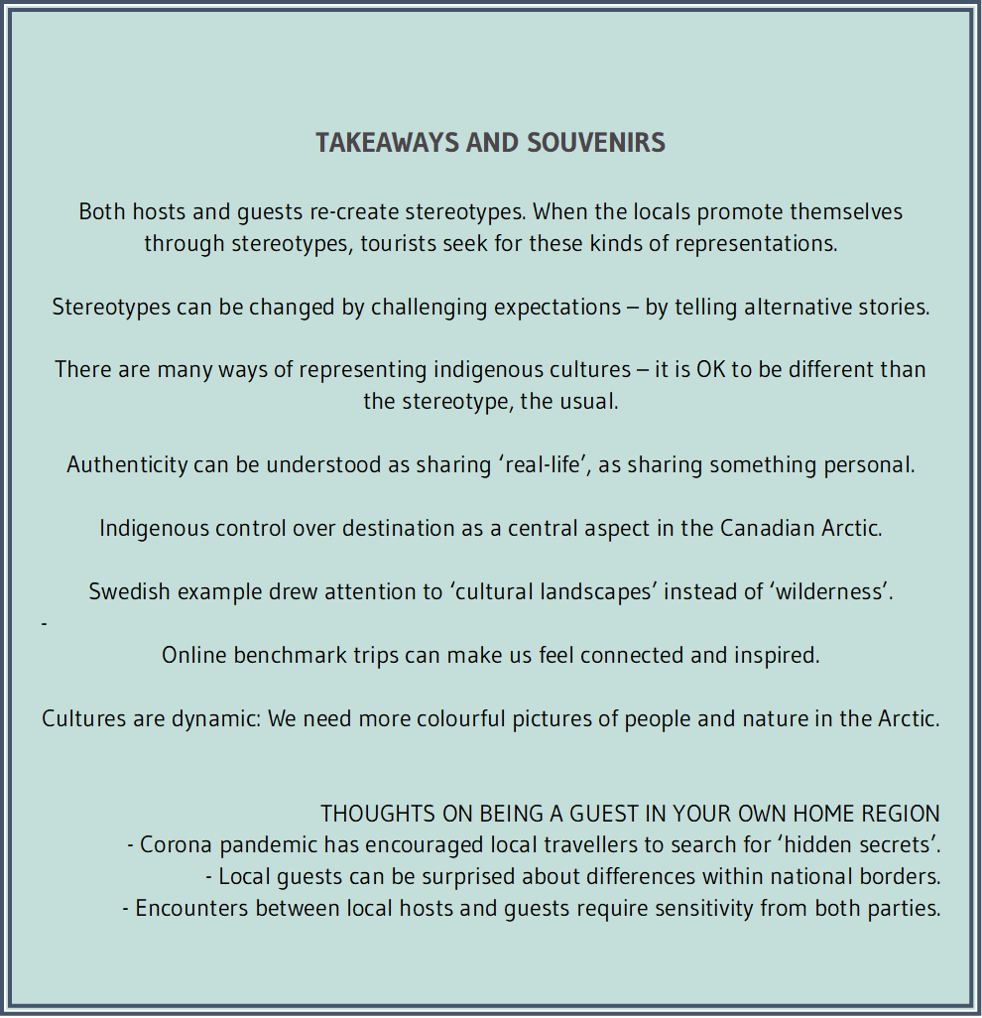
More presentations of Northern Norwegian tourism companies:



